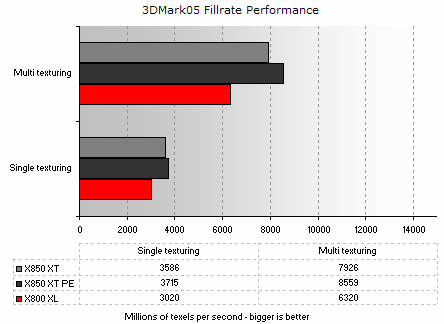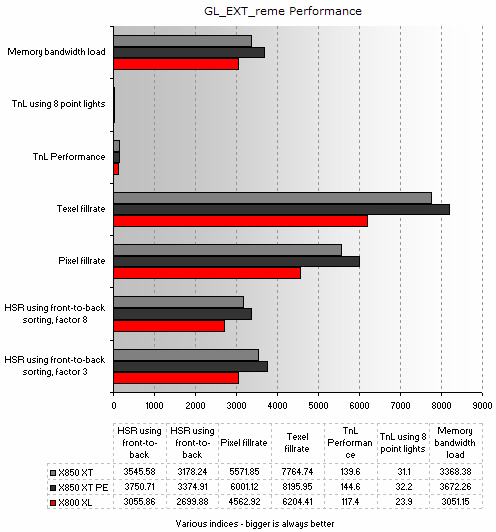Fillrate, GL_EXT_reme and Rightmark
Fillrate
Basic multi-texture fillrate scores give us an idea of efficiency when using the texture units, the score generated as a function of the GPU's clock speed. With all three comparison cards sharing the same texturing ability, clock speed is what will differentiate their raw fillrate performance.
The multi-texture results show outstanding efficiency from R430 and R480 when performance legacy texture operations. Close to 100% theoretical performance is had by all. The frequency differences between the tested hardware are reflected in the results, the 400MHz R430-based X800 XL sitting at around 80% of the 540MHz R480-based X850 XT PE's performance.
GL_EXT_reme
GL_EXT_reme uses simple OpenGL tests to stress the graphics card and find theoretical limits in a number of tests. It measures overdraw, basic texture cache efficiency when reusing a large texture, basic fillrate, geometry performance and hidden surface removal. In other words, most of the basic tasks a GPU performs to render 3D.
The X800 XL's clock speeds determine relative performance again, the same basic architecture in both GPUs offering up no hidden surprises. The performance difference hints strongly at how the X800 XL will be ranked overall.
Righmark
Rightmark confirms what GL_EXT_reme tells you, measuring many of the same facets of accelerated 3D performance.
X800 XL is consistently at around 80% of X850 XT PE's performance, further cementing what GL_EXT_reme and the fillrate tests told us about basic rendering ability.









